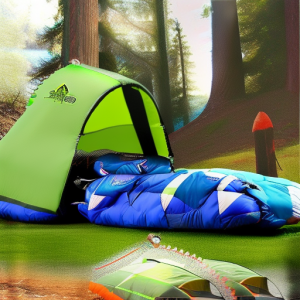News Center+ 查看更多
News Center
+ 查看更多
From Animal Skins to High-Tech Synthetics: The Fascinating Evolution of the Sleeping Bag+ 查看更多
From Animal Skins to High-Tech Synthetics: The Fascinating Evolution of the Sleeping Bag
+ 查看更多
Date:2024-04-03
The sleeping bag, a cocoon that promises rest and warmth in the great outdoors, has come a long way from its rudimentary beginnings. Its evolution is not just a tale of technological advancement but also a reflection of human ingenuity and adaptability. This journey from animal skins to state-of-the-art synthetics offers a glimpse into the development of outdoor gear and our changing relationship with nature.
Primitive Protection: The Origin Stories
Long before the modern sleeping bag, early humans sought shelter and warmth in the hides of animals they hunted. Wrapping themselves in furs was a matter of survival, protecting against the biting cold and unforgiving elements of their environment. These primitive beddings were the first iteration of what would become the sleeping bag—a portable source of warmth during rest.
A Soldier's Respite: Military Influence on Design
The military has often been a catalyst for innovation in practical gear, and sleeping bags are no exception. With the need for soldiers to rest in harsh conditions, the late 19th and early 20th centuries saw the first designs resembling the contemporary sleeping bag. Euklisia Rug, patented by Pryce Jones in 1876, is one such example, which offered a woollen wrap with a waterproof bottom. It was widely sold to armies across the globe and set a precedent for future designs.
Mountaineering Milestones: Taking Comfort to New Heights
Climbers and mountaineers, driven to conquer peaks in terrains where every ounce carried could make a difference, played a pivotal role in the transformation of the sleeping bag. The quest for lighter, more compact, and warmer gear led to the introduction of down-filled sleeping bags in the early 20th century. George Finch's revolutionary use of eiderdown for the 1922 Everest expedition pushed boundaries and proved the exceptional insulating properties of down.
Synthetic Revolution: The Shift to Modern Materials
By the mid-20th century, the discovery and application of synthetic materials brought about a new era for sleeping bags. Nylon, invented in the 1930s, provided a strong, lightweight shell resistant to wind and water. Later, polyester fibres offered an alternative to downfill, creating affordable and hypoallergenic sleeping bags accessible to the wider public.
Case Study: The Nbalps ThermoLite Range
A prime example of high-tech synthetics in action is the Nbalps ThermoLite range. Utilizing advanced microfiber insulation, these sleeping bags offer warmth comparable to down while excelling in wet conditions where natural feathers would clump and lose efficiency. Their design emphasizes weight reduction without compromising on durability—an embodiment of modern outdoor equipment's ethos.
Cultural Comfort: Beyond Survival
Today’s sleeping bags are not solely about survival or utility. They embody cultural shifts towards recreational camping and represent personal expression. From vibrant patterns to collaborations with artists, the aesthetic dimension of sleeping bags contributes to the joy of adventure.
Environmental Ethics: The Rise of Sustainable Practices
The evolution of the sleeping bag also mirrors growing environmental awareness. Brands like Nbalps are pioneering eco-friendly practices, using recycled materials and ensuring ethical down-sourcing. The sleeping bag, once a simple protective layer, now carries the weight of sustainability.
Embracing the Legacy
The history of the sleeping bag is a narrative woven through necessity, war, exploration, technological breakthroughs, and environmental considerations. It reflects how we have learned to adapt, innovate, and ultimately appreciate our natural world more deeply. As we zip ourselves into these snug shelters at night, we share in an enduring legacy—one that continues to evolve as our adventures lead us into the future.

